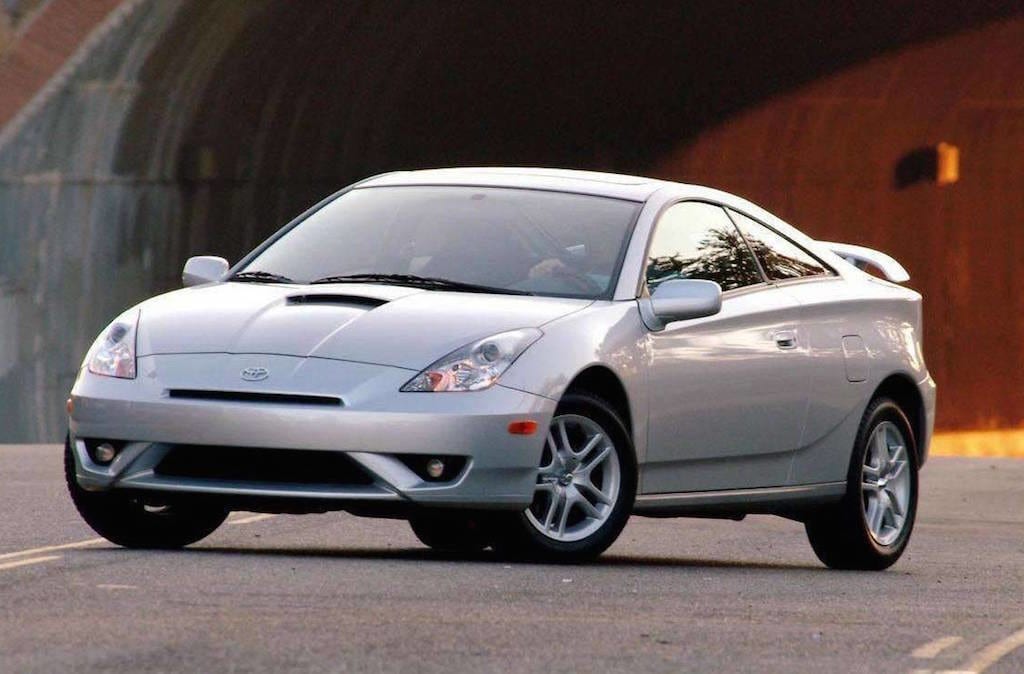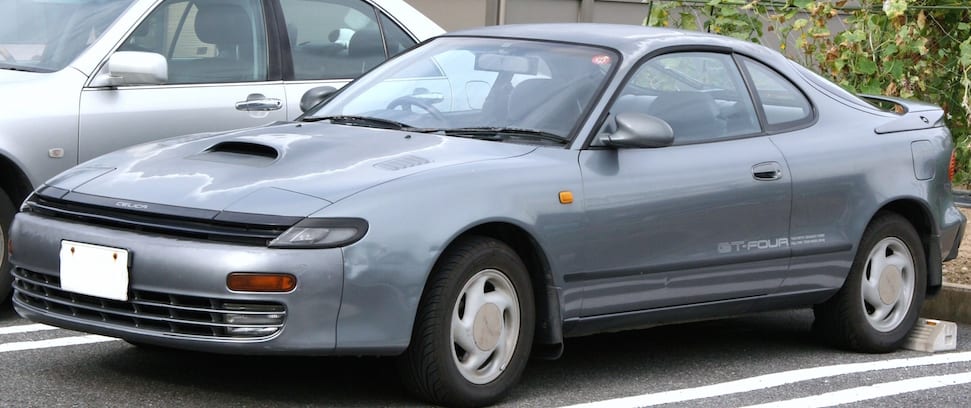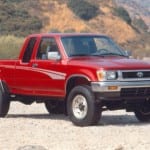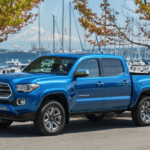Believe it or not, Toyota hasn’t produced new models of their legendary Toyota Celica for nearly ten years! It certainly doesn’t feel that long, and that sentiment is reinforced by the fact that the car’s are still popular on used car lots.
The Celica has a pretty extensive history. The car was a top seller in both Japan and the United States, and it made a name for itself by winning multiple races in the WRC.
Before you decide to head out to one of your local Toyota dealer, check out the history of one of the brand’s most popular sport compact cars. If you’re seeking a used car, you may be convinced that the Celica is the car for you…
Developed in 1967, the Celica made it’s debut at the Tokyo Motor Show in October of 1970. The sport compact car was described as a “cut-down” version of the Toyota 2000GT and an alternative to the Mustang (as described by TopSpeed.com). The name derived from the Latin term for “from the heavens” or “celestial.”
Initially released overseas, the first-generation Celica came in an LT version (featuring a 2T carbureted four-cylinder engine) or an ST version (featuring the more powerful twin Solex-carburetor 2T-B engine). Toyota was already making changes less than four years later, as they quickly introduced their GT model, which featured a DOHC twin-Solex carburetor 1600 cc engine and a number of features, including tinted windows, air conditioning and power windows (don’t forget that this is the 1970s we’re talking about). Soon they came out with the GTV (with the 2T-G engine), which was essentially a lower-end version of the GT.
When the Celica finally hit North America in 1971, the initial ST featured a 1.9-liter 8R engine, and these engines were soon increased to 2.0-liter 18R (1972-74) and 2.2-liter 20R (1975-77). The GT and LT models soon followed, and by 1977, Toyota had already produced one million units. The popularity led to the Celica receiving Motor Trend’s “Import Car of the Year” award in 1974, 1976 and 1977.
By 1978, Toyota released their second-generation Celica, again available in either the ST or GT trims. Both models featured a 2.2-liter engine, and the brand made sure to improve the vehicle’s “safety, power and economy.” The company also released a pair of series for the second-generation car to be categorized into. Series A had rounded headlights and chrome bumpers, while Series B featured square headlights and black rubber bumpers.
The only other change the Celica underwent during it’s second generation was in 1980, when a four-door version was released. Called a Toyota Celica Camry (which was essentially a mashup of the two cars), the vehicle didn’t last particularly long, as the Camry was eventually upgraded to it’s own specific entity.
A 2.4-liter engine highlighted the changes for the third generation of Celicas, which were put into production in 1982. As the Celica continued to grow in size, Toyota decided to add a sporty version to their line, releasing the GT-S model in 1983. The vehicle featured all the amenities you’d expect from a sport car, including larger wheels, fender flares, better suspension and a leather interior.
Prior to the release of the fourth generation, Toyota revamped the front end of the Celica while also adding new retractable headlights, upgraded side vents, and new tail lights (among other features). When fuel injection becoming standard on all the American versions of the car, the 22R engine transformed into the 22R-E.
The fourth-generation Celica, released in 1986, featured the most changes to the car during it’s existence. A new 2.0L four-cylinder engine sat inside a revamped, rounded exterior. All of the cars offered front-wheel-drive and four-wheel independent suspension, and the ST and GT trims could produce around 116 horsepower (the GT-S could produce 135 horsepower on the same engine).
The GT-Four (marketed as the All-Trac Turbo in the USA) was released in Japan in 1986. The turbocharged GT-S 2.0-liter engine could max out at 190 horsepower, and, as TopSpeed.com points out, the model quickly became Toyota’s choice for their rally car.
Speaking of rally cars, the Celica truly made a name for itself in the motorsports community. The car first competed in a World Rally Championship in 1972, finishing ninth in the RAC Rally. Ten years later, the Celica got it’s first victory, winning the 1982 Rally of New Zealand. The Celica was dominant after that, winning six straight WRC events in Africa between 1983 and 1986.
The fifth-generation was ushered in with the 1990 Toyota Celica. Similar to their other generations, Toyota looked to upgrade the car’s style and power. The All-Trac model quickly became the most expensive Celica yet, as the luxury car feature a leather interior, a ten-speaker audio system, and a sunroof. Of course, the inclusion of a turbocharged engine that could produce 200 horsepower only helped the vehicle’s popularity.
The sixth-generation Celica was the longest lasting, spanning from 1994-1999. While the vehicle was only available in the ST (including a 1.8-liter 7A-FE engine) and GT (with it’s 2.2-liter 5S-FE engine) trims, potential buyers could opt for the “sports package.” Meanwhile in Japan, Toyota released the upgraded GT-Four, featuring a 3S-GTE engine that could produce around 250 horsepower. Toyota experimented with a new convertible version of the car, and the company later found ways to slightly upgrade the driving experience, like adding side skirts to improve the vehicle’s aerodynamics.
Over this five to six year span, Toyota trashed some of the trims they were offering for the Celica, including the GT coupe, the regular coupe and the ST model. Available only in the GT trim, buyers could opt for the Liftback or the Convertible.
The seventh-generation was the final hoorah for the Celica, lasting from 2000 to 2006. Teaming up with Toyota Project Genesis, the brand was hoping to appeal to a younger generation. The result? A “high-fashion look with Indy-car design elements,” according to TopSpeed.com. The car was sharp and curvy, and the shorter length/longer wheelbase reduced both front and rear overhangs.
The GT trim was still around, featuring a 1.8-liter 4-cylinder engine that was capable of reaching 140 horsepower. There was also the GT-S, which featured a more powerful 1.8-liter 4-cylinder engine that could produce around 180 horsepower.
As rival companies attempted to compete with the Celica (like, for example, Honda’s release of the Acura RSX), Toyota added some slight upgrades during it’s final years in production. These changes focused mostly on the exterior, as the front bumper was revamped and the tail lights were revised.
However, the competition (and the vicarious drop in sales) ultimately led to the Celica’s demise. Toyota announced in 2005 that the vehicle would be discontinued in the United States, and the final Celica was produced in April, 2006.
Luckily, you can still find the Celica on many used car lots. Many sell for $10,000, so it shouldn’t burn a hole in your pocket. If you ultimately decide to go with the Celica, hurry down to your local dealership. If they’ve got what you’re looking for, you could be driving out of the lot in your new car.









